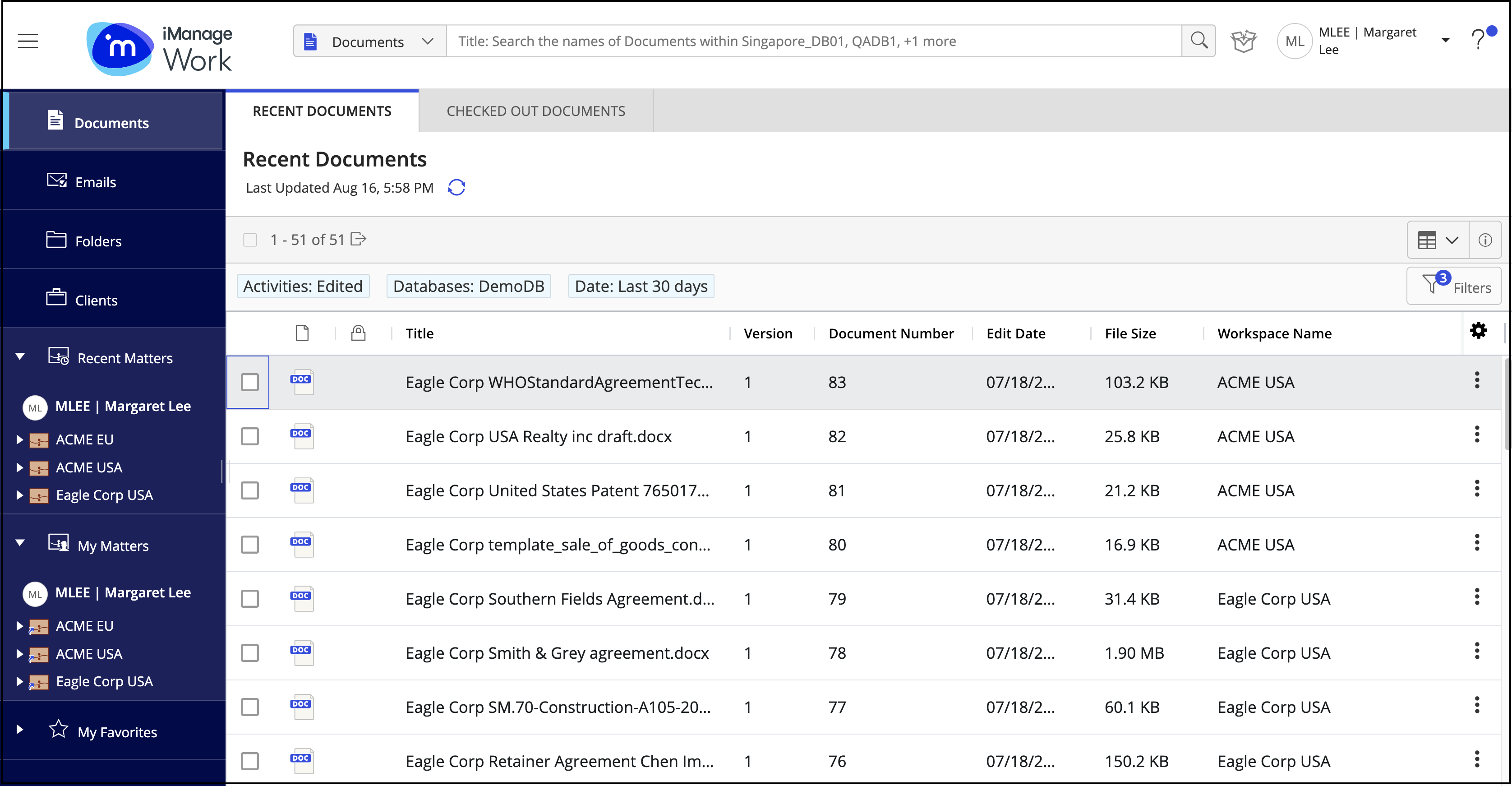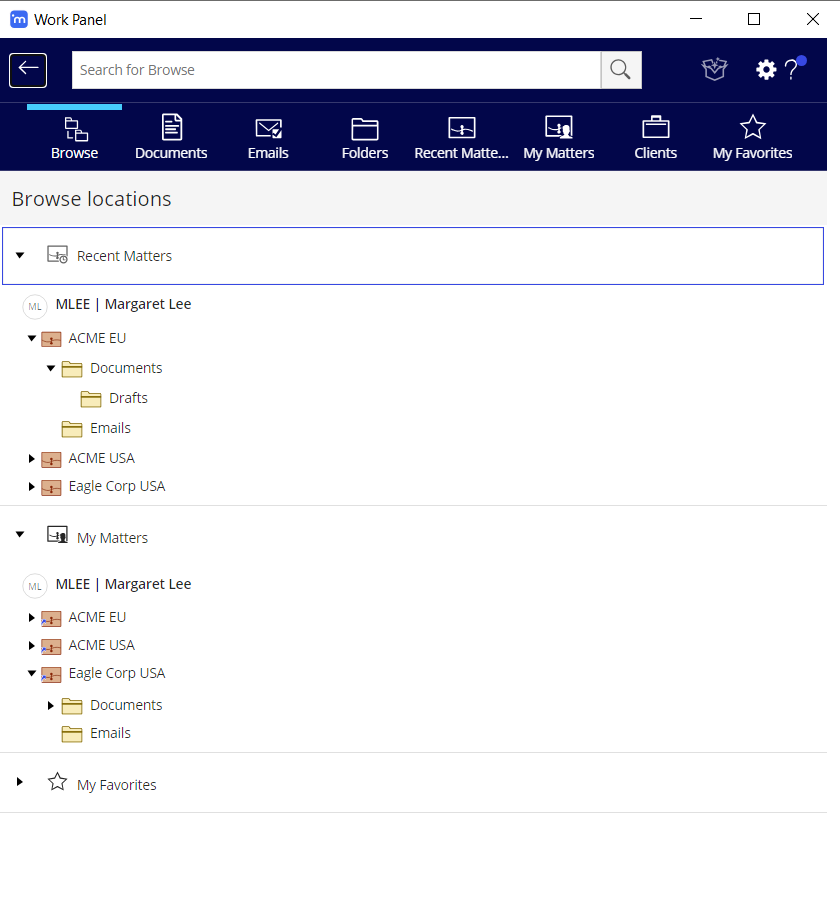The tree view offers improved navigation for users who prefer browsing content in a hierarchical format. With an expandable folder view, you can browse to the following nodes as a starting point:
- Recent Matters
- My Matters
- My Favorites
Figure: Tree view
The tree view state in the user interface persists when you sign in again to iManage Work after a timeout. This feature helps you return to the same location on the tree where you were working on before your previous session timed out.
Figure: Maintaining the tree state after a timeout
If a folder is renamed when a session timed out, then:
iManage Work keeps the Tree View with the older name.
An error message is displayed if you select the folder.
The new folder name is displayed when you right-click on the folder (or parent folder) and perform a refresh.
For inactive folders:
An error message is displayed when you select an inactive folder.
Refreshing the parent folder removes inactive child folders.
Refreshing the parent collapses all subfolders below the child folder.
The tree view state doesn't persist across browsers. If you've been timed out in one browser, you won't be directed to the same location on the tree where you were working on before your previous session timed out, when you sign in from a different browser.
If you've opened iManage Work in multiple tabs for the same browser, the tree view state persists as it is in each tab.
The tree view state persists only on the same client from where you were timed out. For example, if your session was timed out in the Work Panel for Microsoft Outlook, you can't continue working from the same place where you were timed out in the Work Web client.
Selecting Clear local cached settings from the user menu drop-down list collapses the tree to the default view. For example, if you have you configured the Documents tab as the default tab which you want to view when you sign in to iManage Work, then when you sign in again after a session times out, you'll be directed to the Documents tab instead of same location on the tree where you were working on before your earlier session timed out.
If you have subscribed to another user's My Matters and have it open, then the tree view state persists when a session times out and you sign in again into iManage Work.
The tree view is available in the following views:
- iManage Work Web in desktop view.
- iManage Work Panel in Microsoft Outlook when the panel is docked and undocked.
In iManage Work Panel in Microsoft Outlook, when the panel is docked but the width is insufficient, the tree is displayed within the Browse navigation tab.
Figure: Tree view in iManage Work panel
In the tree view, you can:
- Access workspaces under Recent Matters and My Matters in a single flat list that is sorted alphabetically.
- Access the Recent matters and My matters of another user's matter list you're subscribed to.
- Dive deeper into a workspace in the same view to see the full folder hierarchy at a glance.
- Expand the tree horizontally to increase the width of the panel to fully view folders several levels deep, or hover over a workspace to see a tooltip displaying its full name.
- View up to 50 subfolders upon initial expansion of the parent folder. Select View All at the bottom of the tree to view the entire set of subfolders in the center panel.
- Select an item in the tree to see its content in the center panel. The focus also shifts automatically to select the first item in the list or grid view in the container in the center panel
- Receive an indication if a folder or a workspace has subfolders through the presence of the chevron for the container (under My Matters, a chevron is always shown at the workspace level).
- Access newly created subfolders under a folder or workspace, by right-clicking on the item and selecting refresh from the right-click context menu.
- If iManage Share is enabled, select a blue Share folder in the tree view to open the Share folder on the same tab.
- Use the following keyboard shortcuts to quickly navigate within the tree and back to it from the center panel:
Key | Action |
|---|---|
Up arrow | Move up the tree items |
Down arrow | Move down the tree items |
Right arrow | Expand the tree item |
Shift Left arrow | Move the focus from the center panel back to the previous item selected in the tree. |
Left arrow | Collapse the tree item |
Enter | Selecting Enter for a workspace or folder in the tree also opens that container in the center panel and shows the list of items directly underneath it. |
In the tree view, the filters are positioned to the right and open from there. Applied filters are displayed on top of the results, making it easier for users to see what the results are filtered by.
Figure: Filters in the Tree view



